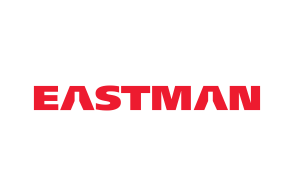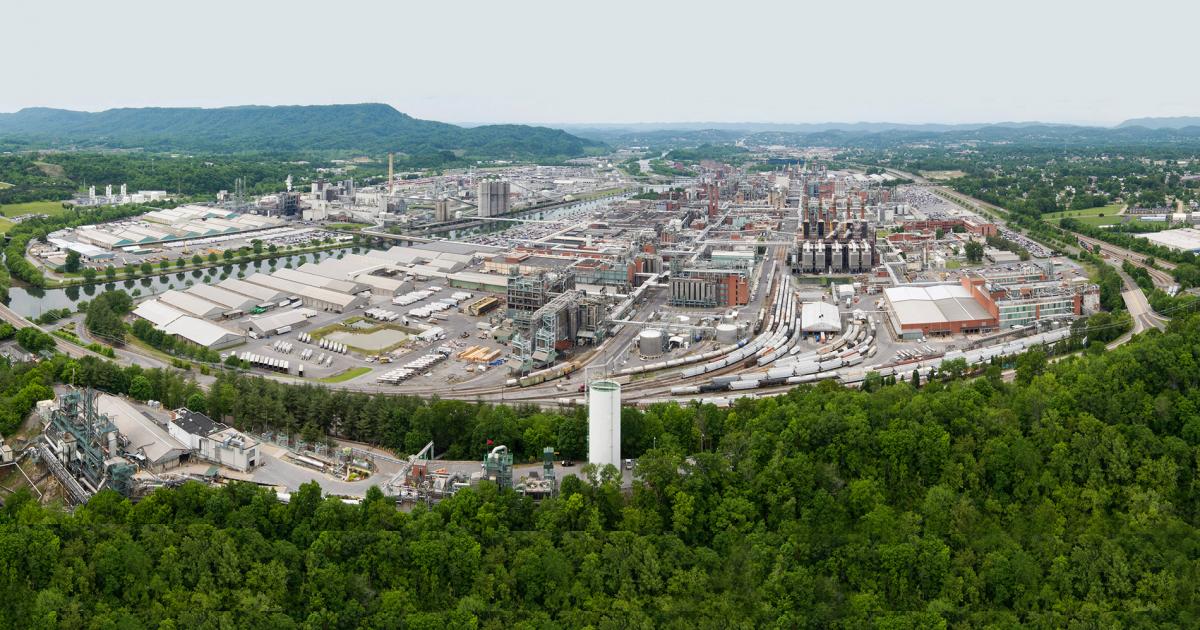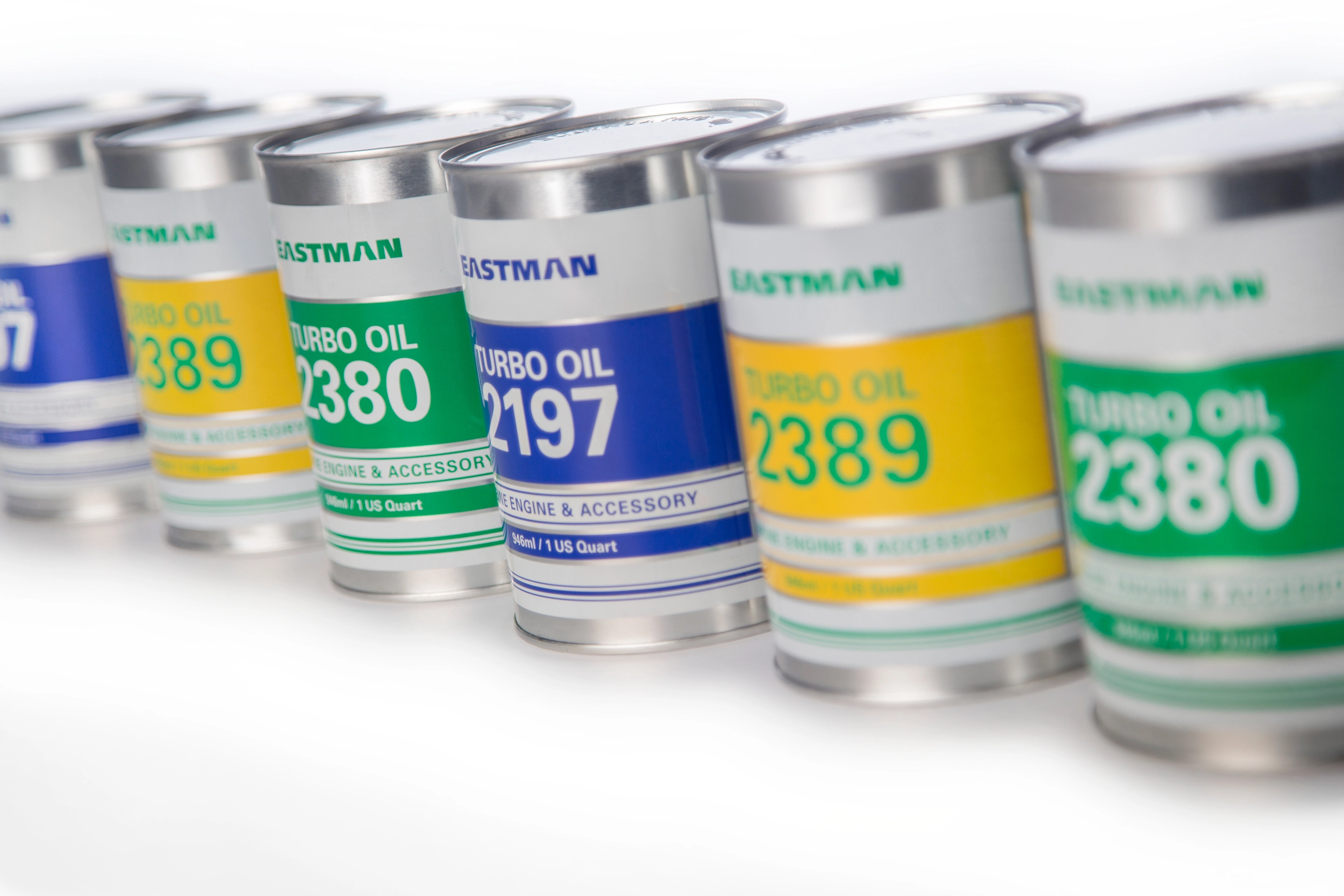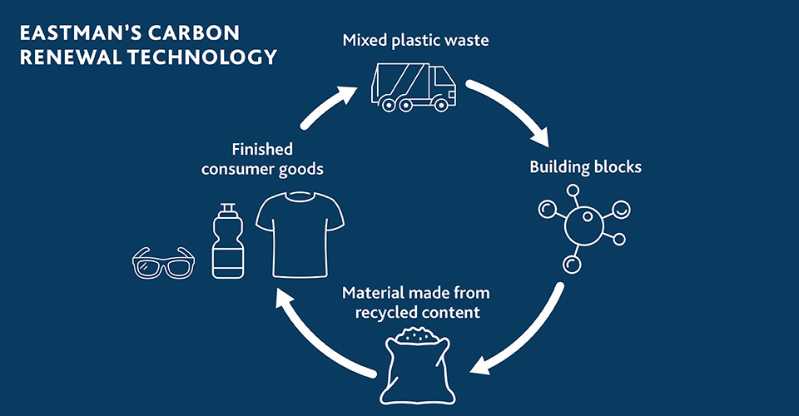Eastman Chemical Company
Summary
- Eastman Chemical Company is a global specialty materials company that produces a broad range of chemical products found in items people use every day. The company was established in 1920 and headquartered currently in Kingsport, Tennessee.
- Eastman has 35 manufacturing facilities and has equity interests in two manufacturing joint ventures in a total of 12 countries as of December 31, 2022.
- The company divides its operations into four segments - Advanced Materials ("AM"), Additives & Functional Products ("AFP"), Chemical Intermediates ("CI"), and Fibers.
- Sales revenue of the company decreased in first quarter 2023 to $2,412 million compared to first quarter 2022 of $2,714 million as a result of the impact from divested business and decreases in the CI and AFP segments, partially offset by increases in the Fibers and AM segments. Net earnings attributable to Eastman shareholders in the first quarter of 2023 is $134 million, and $235 million a year earlier.
- The Company generated sales revenue of $10.6 billion and $10.5 billion for 2022 and 2021, respectively. Net earnings of the company is reported to be $793 million and $857 million, respectively for the years. Diluted earnings per share (EPS) is $6.35 and $6.25 for the years, respectively.
Brief Company Overview
 Eastman Chemical Company (NYSE:EMN) is a global specialty materials company started its business from 1920 and took its current for of a public company on December 31, 1993. Initially, the company produced chemical for Eastman Kodak Company's photographic business but now it produces a range of products found in items people use every day. Eastman has 35 manufacturing facilities and has equity interests in two manufacturing joint ventures in a total of 12 countries as of December 31, 2022. The Company's headquarters and largest manufacturing facility are located in Kingsport, Tennessee. The Company's regional headquarters are in Shanghai, China; Rotterdam, the Netherlands; Singapore; and Zug, Switzerland. Eastman's businesses are managed and reported in four operating segments: Advanced Materials ("AM"), Additives & Functional Products ("AFP"), Chemical Intermediates ("CI"), and Fibers.
Eastman Chemical Company (NYSE:EMN) is a global specialty materials company started its business from 1920 and took its current for of a public company on December 31, 1993. Initially, the company produced chemical for Eastman Kodak Company's photographic business but now it produces a range of products found in items people use every day. Eastman has 35 manufacturing facilities and has equity interests in two manufacturing joint ventures in a total of 12 countries as of December 31, 2022. The Company's headquarters and largest manufacturing facility are located in Kingsport, Tennessee. The Company's regional headquarters are in Shanghai, China; Rotterdam, the Netherlands; Singapore; and Zug, Switzerland. Eastman's businesses are managed and reported in four operating segments: Advanced Materials ("AM"), Additives & Functional Products ("AFP"), Chemical Intermediates ("CI"), and Fibers.
Due to WWI, there was a scarcity in raw materials such as photographic paper, gelatin, optical glass and many related chemicals around 1920. George Eastman established the Eastman Kodak Company as he wanted an independent supply of chemicals for his photographic processes. After the war, he turned his attention to the forests of the southern U.S. In 1920, Tennessee Eastman was born in Kingsport.
As of December 31, 2022, the company employs 14,500 full-time employees. Mark J. Costa serves as the Chairman & CEO of the company. As of March 31, 2023, the company had 222,703,492 shares of common stock issued and outstanding. Diluted earnings per share for the quarter was $1.12, and for the previous financial year 2022 was $6.35 and it was $6.25 a year earlier. As of May, 2023, 52-week range of the share price of the company was $112.78 to $69.91; trailing P/E was 14.86 times; price to sales was 1.00 times; return on equity (ttm) is 12.49%; return on assets (ttm) is 4.51%.

Recent Developments
- On February 14, 2023, Board of Directors of Eastman Chemical Company has declared quarterly cash dividend of $0.79 per share to be paid on April 10, 2023 to the shareholders of record on March 15, 2023.
- Eastman Chemical Company on February 01, 2023 announced that it has acquired Ai-Red Technology (Dalian) Co., Ltd., a manufacturer and supplier of paint protection and window film for auto and architectural markets in the Asia Pacific region.1 Terms of the agreement were not disclosed.
Recent Financial Activities
Eastman Chemical Company has a long-term borrowing portfolio of $4,025 million, which was $4,412 million a year earlier. As of December 31, 2022, 222,348,557 shares of common stock were issued and outstanding compared to 221,809,309 a year earlier; treasury stock at cost outstanding was 103,602,488 and 92,892,229 for the dates, respectively.
- In January 2023, the Company borrowed $300 million under a delayed draw two-year term loan (the "2024 Term Loan"), which was executed in fourth quarter 2022.
- In 2022, the Company borrowed $500 million under a five-year term loan agreement (the "2027 Term Loan"). The 2027 Term Loan had a variable interest rate of 5.55% as of December 31, 2022.
- In 2022, Eastman repaid the 3.6% notes due August 2022, of which $550 million was repaid in second quarter 2022 primarily from the proceeds of a $500 million five-year term loan agreement (the "2027 Term Loan") and $200 million was repaid in third quarter 2022 using available cash.
During November 1-30, 2022, Eastman has purchased 611,452 shares of its common stock at a weighted average price of $82.68; during December 1-31, 2022, the company purchased 592,863 of its common stock at a price of $84.33 per share.
Financial Highlights
Q1'23 Highlights
Sales revenue decreased in first quarter 2023 to $2,412 million compared to first quarter 2022 of $2,714 million as a result of the impact from divested business and decreases in the CI and AFP segments, partially offset by increases in the Fibers and AM segments. Gross profit during the quarters has been $529 and $550, respectively. Gross profit in first quarter 2023 and 2022 included incremental costs and insurance proceeds, from the steam line incident, and first quarter 2023 included
accelerated depreciation resulting from the previously reported closure of an acetate yarn manufacturing facility in Europe in the Fibers segment. Excluding these non-core and unusual items, gross profit decreased in first quarter 2023 compared to first quarter 2022 as a result of decreases in the CI and AFP segments, partially offset by increases in the Fibers and AM segments. Net earnings attributable to Eastman shareholders in the first quarter of 2023 is $134 million, and $235 million a year earlier. Earnings per share (EPS) during the quarters has been $1.12 and $1.80, respectively.
Annual Performance Highlights
The Company generated sales revenue of $10.6 billion and $10.5 billion for 2022 and 2021, respectively. Gross profit for the years are $2,137 million and $2,500 million, respectively. Earnings before interest and taxes (EBIT) of the company is $1,159 million during 2022, and $1,281 million in 2021. The company had incurred a significant loss of $552 million in 2021 owing to losses on divested businesses, which was $43 million in 2022. Net earnings of the company is reported to be $793 million and $857 million, respectively for the years. Diluted earnings per share (EPS) is $6.35 and $6.25 for the years, respectively.
Total current assets of Eastman on December 31, 2022 is $3,778 million and $4,646 million a year earlier. Among the current assets, the company had no assets held for sale in 2022 but had $1,007 million of assets held for sale in 2021. Net properties and equipment is $5,160 million and $4,996 million for the years, respectively. The company had current liabilities of $3,251 million on December 31, 2022 as compared to $2,971 million a year earlier.
Net cash provided by operating activities during 2022 is $975 million as compared to $1,619 million a year earlier. Net cash provided by and used in investing activities are $392 million and $29 million, respectively for the years. Net cash used in financing activities during the years are $1,321 million and $1,690 million. Cash and cash equivalents balance at the end of the period is $493 million and $459 million, for 2022 and 2021, respectively for the period.
Business Overview
Eastman Chemical Company is a global specialty materials company whose products and operations are managed and reported in four operating segments: Advanced Materials ("AM"), Additives & Functional Products ("AFP"), Chemical Intermediates ("CI"), and Fibers. The organizational structure is based on the management of the strategies, operating models, and sales channels of the company.

Advanced Materials (AM) Segment
In the AM segment, the Company produces and markets polymers, films, and plastics with differentiated performance properties for value-added end-uses in transportation; durables and electronics; building and construction; medical and pharma; and consumables end-markets. Key technology platforms for this segment include cellulosic biopolymers, copolyesters, and PVB and polyester films.
Eastman's technical, application development, and market development capabilities enable the AM segment to modify its polymers, films, and plastics to control and customize their final properties for development of new applications with enhanced functionality. TritanTM copolyesters are a solution for food contact applications due to their performance and processing attributes and bisphenol A free ("BPA free") properties. The SaflexTM Q Series product line is a acoustic solution for architectural and automotive applications. The Company also maintains a leading solar control technology position in the window films market as well as advanced urethane film and coatings technologies in the paint protection film market. The segment principally competes on differentiated technology and application development capabilities. The products under this segment are divided into three categories - Advanced Interlayers, Performance Films, and Specialty Plastics. Under Advanced Interlayers (29% of total segment's sale in 2022), the company has SaflexTM, SaflexTM Q Series, SaflexTM ST, and SaflexTM E Series; under Performance Films (20% of total segment's sale in 2022) LLumarTM, FlexvueTM, SunTekTM, V-KOOLTM, and GilaTM; and under Specialty Plastics (51% of total segment's sale in 2022) TritanTM copolyester, EastarTM copolyesters, SpectarTM copolyester, EmbraceTM copolyester, VisualizeTM, Eastman AspiraTM, and TrevaTM.
Additives & Functional Products (AFP) Segment
In the AFP segment, the Company manufactures materials for products in the transportation; personal care and wellness; food, feed, and agriculture; building and construction; water treatment and energy; consumables; and durables and electronics end-markets. Key technology platforms are cellulosic biopolymers, polyester polymers, alkylamine derivatives, and propylene derivatives. The AFP segment is focused on producing high-value additives that provide critical functionality but which comprise a small percentage of total customer product cost. The segment principally competes on the differentiated performance characteristics of its products and through leveraging its strong customer base and long-standing customer relationships to promote substantial recurring business and product development.

The products of this segment are divided into four categories - Animal Nutrition, Care Additives, Coatings Additives, and Specialty Fluids & Energy. In the animal nutrition category (14% of total segment's sale in 2022), the company has Organic acids and derivatives, and Choline chloride. Under Care Additives (34% of total segment's sale in 2022), the company has Alkylamine derivatives, Organic acids and derivatives, Cellulosic bioplymers, and AdjustTM. In the Coatings Additives group (34% of total segment's sale in 2022), the company has polymers like TetrashieldTM, additives and solvents like TexanolTM, OptifilmTM, and EastaPureTM, electronic chemicals. Under the Specialty Fluids & Energy category (18% of total segment's sale in 2022), it has TherminolTM, Turbo oils, SkydrolTM, SkykleenTM, and MarlothermTM.
In response to market and business conditions, the Company divested its adhesives resins assets and business in 2022. The sale consisted of hydrocarbon resins (including Eastman Impera tire resins), pure monomer resins, polyolefin polymers, rosins and dispersions, and oleochemical and fatty-acid based resins product lines.
Chemical Intermediates (CI) Segment
Eastman leverages large scale and vertical integration from the cellulosic biopolymers and acetyl, olefins, and alkylamines streams to support the Company's specialty operating segments with advantaged cost positions. The CI segment sells excess intermediates beyond the Company's internal specialty needs into end-markets such as industrial chemicals and processing, building and construction, health and wellness, and agrochemicals. Key technology platforms include acetyls, oxos, plasticizers, polyesters, and alkylamines. The CI segment product lines benefit from competitive cost positions primarily resulting from the use of and access to lower cost raw materials, and the Company's scale, technology, and operational excellence. The CI segment also provides superior reliability to customers through its backward integration into readily available raw materials, such as propane, ethane, coal, and propylene. Several CI segment product lines are affected by cyclicality, most notably olefin and acetyl-based products. This cyclicality is caused by periods of supply and demand imbalance, when either incremental capacity additions are not offset by corresponding increases in demand, or when demand exceeds existing supply.
The products of this segment are divided into three categories - Functional Amines, Intermediates, and Plasticizers. The Functional Amines (represents 24% of total segment's sales in 2022) include Alkylamines; Intermediates (represents 56% of total segment's sales in 2022) include Oxo alcohols and derivatives, Acetic acid and derivatives, Acetic anhydride, Ethylene, Glycol ethers, and Esters; Plasticizers (represents 24% of total segment's sales in 2022) include Eastman 168TM, Dioctylphthalate ("DOP"), BenzoflexTM, TXIBTM, and EffusionTM.
Fibers Segment
In the Fibers segment, Eastman manufactures and sells acetate tow and triacetin plasticizers for use in filtration media, primarily cigarette filters; cellulosic staple fibers and
filament yarn for use in apparel, home furnishings, and industrial fabrics; nonwoven media for use in filtration and friction applications, used primarily in transportation, industrial, and agricultural end-markets; and cellulose acetate flake and acetyl raw materials for other acetate fiber producers. The Company is the world's largest producer of acetate yarn and has been in this business for over 85 years. The 10 largest Fibers segment customers accounted for approximately 60 percent of the segment's 2022 sales revenue, and include multinational as well as regional cigarette producers, fabric manufacturers, and other acetate fiber producers.
The products of the segment are divided into four categories - Acetate Tow, Acetate Yarn and Fiber, Acetyl Chemical Products, and Nonwovens. Amonng the categories, Acetate Tow (represents 64% of total segment's sales in 2022) includes EstronTM; Acetate Yarn and Fiber (represents 14% of total segment's sales in 2022) includes NaiaTM, and EstronTM; Acetyl Chemical Products (represents 16% of total segment's sales in 2022) include EstrobondTM; and Nonwovens (represents 6% of total segment's sales in 2022) include Nonwovens.
Other Business Information
Business of Eastman has seasonality effects - the earnings are typically higher in second and third quarters and cash flows from operations are typically highest in the second half of the year due to seasonal demand based on general economic activity in the Company's key markets. Results in all segments except the Fibers segment are
typically weaker in the fourth quarter due to seasonal downturns in key markets. Eastman markets and sells products primarily through a global marketing and sales organization which has a presence in the United States and approximately 30 other countries where it owns of leases approximately 200 stand-alone distribution facilities, selling into more than 100 countries around the world. Eastman's strategy is to target industries and markets where the Company can leverage its application development expertise to develop product offerings to provide differentiated value that address current and future customer and market needs. The Company's products are shipped to customers and to downstream users directly from Eastman manufacturing plants and distribution centers worldwide.
Eastman purchases a majority of its key raw materials and energy through different contract mechanisms, generally of one to three years in initial duration with renewal or
cancellation options for each party. The cost of raw materials and energy is generally based on market price at the time of purchase; however, from time to time Eastman uses derivative financial instruments for certain key raw materials to mitigate the impact of market price fluctuations. Key raw materials include propane, propylene, paraxylene, methanol, cellulosic biopolymers, fatty alcohol, polyvinyl alcohol, and a wide variety of precursors for specialty organic chemicals. Key purchased energy sources include natural gas, coal, and electricity.
The company employs about 14,500 people around the world, of which about 72% are employed in the US and Canada. Eastman has an extensive customer base. Operation of the company is not dependent up a few large customers. However, in 2022, the company has generated about 55% of its total sales from top 100 customer. But no single customer has accounted for 10% or more of the revenue in 2022.
Company History
Earlier George Eastman founded the Eastman Kodak and after the World War I when it was hard to get raw materials Eastman wanted an independent supply of chemicals for his photographic processes in Kodak. Tennessee Eastman was incorporated in 1920 to serve that purpose. Over its first decade of operation, the Kingsport site expands its production to include products like non-flammable X-ray film and charcoal briquettes. During the second decade of the company from 1930 to 1939, Eastman sees expansion into materials like acetate yarn and cellulosic plastics. Eastman TENITE plastic is used for a wide range of products including steering wheels, radio knobs, and poker chips. Under the leadership of Perley Wilcox, the Kingsport site begins producing hydroquinone and acetic acid, chemicals it continues to manufacture today.
During the World War II, Eastman supported the U.S. by manufacturing the powerful explosive RDX at Holston Ordnance Works in Kingsport. Hydroquinone becomes a critical ingredient for rubber in jeep and aircraft tires. Because of its reputation as a “gets things done” company, Eastman is operations lead for the Y-12 plant of Clinton Engineer Works, helping develop the atomic bomb.

From the year 1950 through 1959, Eastman operations expand to Longview, Texas, to produce ethylene and propylene for ethyl alcohol and aldehydes for the Kingsport site, and polyethylene for use in products like packaging and cameras. The production of acetate tow filter begins. New research labs yield a range of products acrylic, textile and polyester fibers, adhesives, and wax coatings.
The 1960s are period of growth for Eastman. Revenues doubled over the decade. The first manufacturing plant outside the United States opens in Workington, England, producing fibers. The company expands operations to Columbia, South Carolina, to keep up with growing demand for polyester textiles. The company experienced strong growth as revenues grew to $2 billion by the end of the 70s. Eastman introduces cellulose acetate butyrate (CAB) for high quality automotive coatings. A manufacturing site in Batesville, Arkansas, opens to produce photographic and organic chemicals. The oil embargo pressures the company to become less dependent on oil as a feedstock. In the 80s, the company began operations of the first commercial plant designed to make industrial chemicals from coal.
In 1994, Eastman spins off from Kodak as the 10th largest chemical company in the U.S. and the 34th largest in the world. Earnie Deavenport is the first CEO of the new publicly traded company, guiding Eastman through rapid global expansion. Throughout the decade 2000-2009, global growth of the company continues including the opening of a regional headquarters in The Netherlands. The company’s portfolio begins to shift with acquisitions (Hercules in 2011) and divestitures of some businesses and sites. Top leadership changes twice with Brian Ferguson becoming CEO in 2002 and James P. Rogers succeeding him in 2009. Eastman’s rich legacy of innovation continues with the launch of Eastman Tritan copolyester in 2007.
After 2010, Eastman continues its global portfolio evolution. Two of the largest acquisitions in its history (Solutia in 2012 and Taminco in 2014) propel the company forward in its transformation toward being a specialty materials company. The company begins to earn international accolades including ENERGY STAR Partner of the Year, Responsible Care Company of the Year, World’s Most Ethical Companies, Best Place to Work by Glassdoor, and America’s Most JUST companies. Mark Costa becomes CEO in 2014.
On the morning of October 4, 2017, an explosion occurred at Eastman's Kingsport Plant around the coal gasification building. In April 2018, the Tennessee Department of Environment and Conservation determined the cause to be a valve blockage due to slurry or debris intrusion.

In 2019, Eastman began commercial-scale chemical recycling (circular recycling) for a broad set of waste plastics that would otherwise be placed in a landfill or incinerated. Carbon renewal technologies and polyester renewal technology of Eastman provide a true circular solution of infinite recycling for materials including polyesters, polypropylene, polyethylene, and polystyrene. In January 2021, Eastman announced plans to build a methanolysis plant that will convert polyester waste into durable products.2 The Company divested its rubber additives product line in 2021 and its adhesives resins assets and business in 2022, due to earnings volatility that was not in line with Eastman's expectations for the performance of a specialty business.




